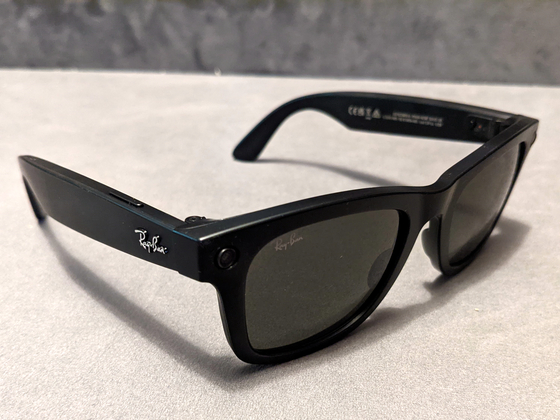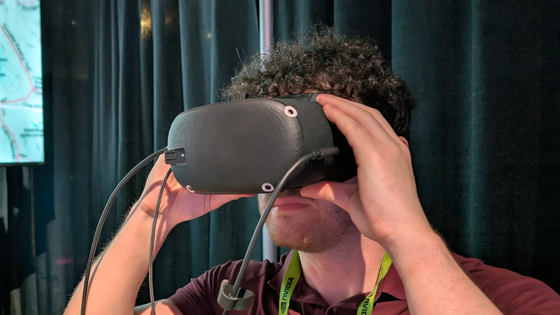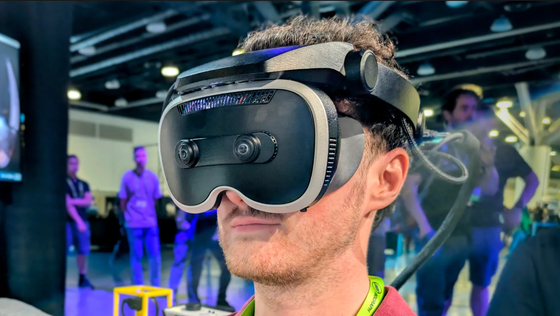Meta is rumored to release its Hypernova smart glasses with a display in September 2025 for around $800.

Meta is reportedly planning to release its first smart glasses with a display, called Hypernova , in September 2025. Hypernova is positioned as a precursor to full-fledged augmented reality (AR) glasses.
Why Doesn't the Vision Pro Have More Immersive Video? Apple Is Slow-Rolling It - Bloomberg
The global smart glasses market grew rapidly in the first half of 2025, increasing 110% year-on-year, with Meta's Ray-Ban Meta smart glasses at the center of this growth. Meta increased its market share to 73% and shipments by more than 200%, supported by the expansion of manufacturing operations by Luxottica , the world's largest eyewear manufacturer. Meanwhile, Chinese manufacturers such as Xiaomi have also entered the market, and Xiaomi's AI glasses in particular have strengthened their presence, ranking fourth in sales worldwide just one week after their release. AI glasses account for 78% of all smart glasses shipments, driven by performance that surpasses conventional audio glasses, including photo and video capture, translation, and recognition functions. Major players, including Meta and Alibaba, are expected to launch new products in the future, and the market is predicted to continue growing at an annual rate of over 60% through 2029.

Meanwhile, Meta is developing Hypernova, a smartglasses that could lead to full-featured AR glasses. This name is the codename Meta uses internally. While the device looks similar to regular eyeglasses, it features a small display on the right lens that can display notifications and simple applications. Users can view messages and alerts and use mini-apps through this screen, providing a more advanced experience than traditional smartglasses.
The device uses a wrist-mounted controller called a 'neuralist accessory,' a technology also used in Meta's AR prototype 'Orion.' This technology reads neural signals to enable intuitive operation, providing a more seamless interface than traditional methods that rely on touch or voice input.
Meta develops a wristband-type device that reads muscle movements and turns them into a keyboard-free input device - GIGAZINE

The price was initially expected to be over $1,000 (approximately ¥150,000), but Meta has set the price at around $800 (approximately ¥120,000) to reduce profitability and aim to popularize the market. However, the price may rise further depending on changes to the frame design and the addition of prescription lenses. Although it is more expensive than the Ray-Ban Meta and Oakley smart glasses that Meta already offers, by keeping the price at the same level as an iPhone, Meta has adjusted the price to a level that makes it easier for consumers to afford this advanced experience.
According to Bloomberg, Hypernova is scheduled for an official launch in September 2025 and is positioned as a key product for Meta as it looks ahead to the next generation of wearables. For Meta, Hypernova will be a stepping stone to the future of the AR market, competing with rivals like Apple Vision Pro, while differentiating itself with a built-in display and offering a new operating experience with wrist-mounted accessories.
In parallel with the development of Hypernova, Meta has unveiled ' Tiramisu ,' a prototype research VR device that achieves a resolution of 90 PPD, a brightness of 1400 nits, and a contrast three times higher than that of the Quest 3. Tiramisu uses custom refractive lenses made with high-refractive-index glass to minimize light loss. Meta unveiled Tiramisu at the SIGGRAPH exhibition, held from August 10th to 14th, 2025, as one solution to the brightness challenge of bringing realism and persuasiveness to VR spaces.

At SIGGRAPH, Meta also unveiled the Boba 3 , a research prototype featuring an ultra-wide field of view that covers 'approximately 90% of the human field of view.' While the Meta Quest 3 has a horizontal field of view of approximately 108 degrees, the Boba 3 has a horizontal field of view of 180 degrees, making it possible to cover the entire field of view in VR space.

Tiramisu and Boba 3 are research platforms that test the ultimate goal of 'how high the resolution and brightness need to be to achieve a sense of realism,' while Hypernova leverages that knowledge to become a product that first helps users get used to the 'wearable experience' and 'new operating system.' Meta is a two-pronged approach, drawing a vision of the future through research while narrowing down the features at the market launch stage to ensure it does not lose touch with consumers.
Related Posts:
in Hardware, Posted by log1i_yk







